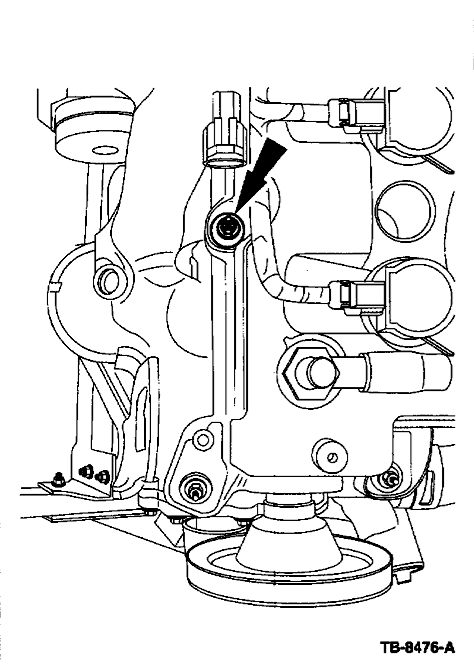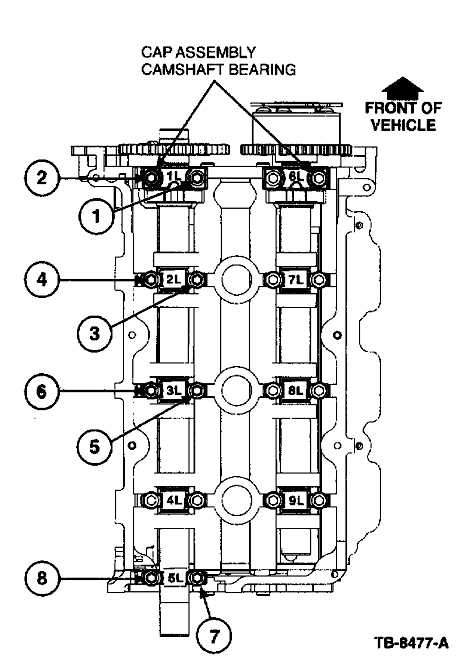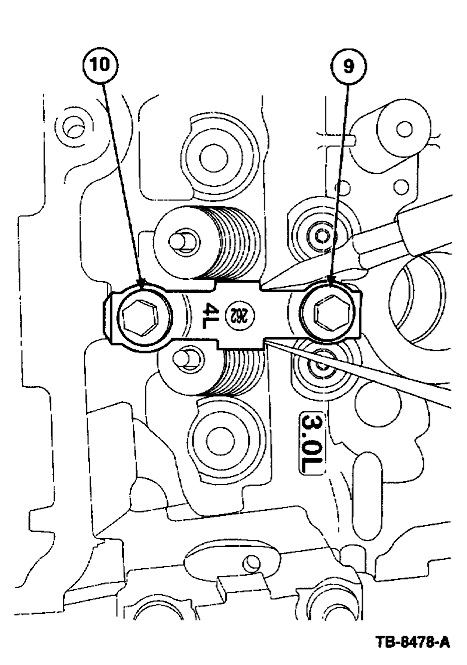Some 2005-2007 Five Hundred, Freestyle, Montego, and 2006-2007 Fusion, Milan, 2006 Zephyr, 2006-2008 Escape and Mariner vehicles built 1/17/2006 thru 5/31/2007, equipped with the Ford 3.0L 4V Duratec engine with exhaust camshaft driven water pumps may exhibit a ticking noise from the left bank cylinder head with the engine at normal operating temperature.
Engine Builders/Installers may refer to the following Service Procedure to identify and resolve the engine ticking noise.
To diagnose, with the engine running and warm (normal operating temperature), using a mechanic’s stethoscope, determine if ticking noise is coming from the left hand exhaust camshaft at cylinder number 6 (Figure 1). If a ticking noise can be verified, refer to the following Service Procedure.
For 2007 Fusion and Milan check the date on the front cover engine label. If the engine build date is 5/9/2007 or before, refer to the following to identify and resolve the engine ticking noise. For engines built after this date, this procecedure does not apply.
1. Remove the left hand camshaft cover. Refer to appropriate section of Service Manual.
2. Rotate the engine clockwise until the cylinder number 6 exhaust cam lobes are pointing up and the valves are fully closed.
3. Remove all left hand exhaust cam caps individually and reinstall them finger tight.
4. Torque bolts in sequence as shown in Figure 2, to 72 in.lbs. (8 Nm) excluding cam cap number 4L camshaft cap.
5. Using a screw driver positioned on each side of the top of cam cap number 4L (Figure 3), apply hand pressure and shift the 4L cam cap toward the exhaust side of the cylinder head.
6. While holding cam cap 4L in the shifted position, torque fastener number 9 (Inboard) first, to 72 in.lbs. (8 Nm) then torque fastener number 10 (Figure 3).
7. Install the left hand camshaft cover. Refer to appropriate section of the Service Manual.
8. Installers should fully warm the engine to verify the repair.
Some or all of this information was provided by the Automotive
Parts Remanufacturers Association (APRA). For more information on
technical bulletins available through APRA call 703-968-2772 or visit www.AutoBulletins.com. 















